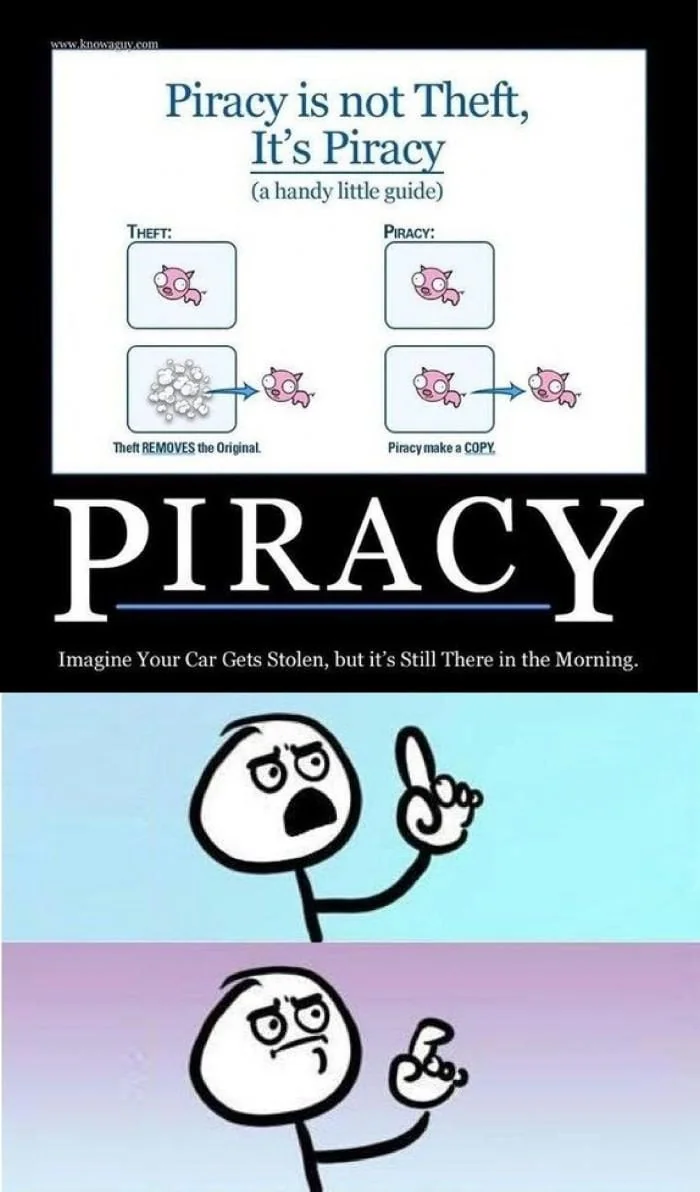this post was submitted on 05 Jul 2025
847 points (96.5% liked)
Piracy: ꜱᴀɪʟ ᴛʜᴇ ʜɪɢʜ ꜱᴇᴀꜱ
64213 readers
1031 users here now
⚓ Dedicated to the discussion of digital piracy, including ethical problems and legal advancements.
Rules • Full Version
1. Posts must be related to the discussion of digital piracy
2. Don't request invites, trade, sell, or self-promote
3. Don't request or link to specific pirated titles, including DMs
4. Don't submit low-quality posts, be entitled, or harass others
Loot, Pillage, & Plunder
📜 c/Piracy Wiki (Community Edition):
🏴☠️ Other communities
FUCK ADOBE!
Torrenting/P2P:
- !seedboxes@lemmy.dbzer0.com
- !trackers@lemmy.dbzer0.com
- !qbittorrent@lemmy.dbzer0.com
- !libretorrent@lemmy.dbzer0.com
- !soulseek@lemmy.dbzer0.com
Gaming:
- !steamdeckpirates@lemmy.dbzer0.com
- !newyuzupiracy@lemmy.dbzer0.com
- !switchpirates@lemmy.dbzer0.com
- !3dspiracy@lemmy.dbzer0.com
- !retropirates@lemmy.dbzer0.com
💰 Please help cover server costs.
 |
 |
|---|---|
| Ko-fi | Liberapay |
founded 2 years ago
MODERATORS
you are viewing a single comment's thread
view the rest of the comments
view the rest of the comments


Counterpoint: When Louis CK (prior to being outed as a sex pest) released one of his comedy specials on his website DRM-free for $5 he became a millionaire almost overnight.
https://boingboing.net/2011/12/22/drm-free-experiment-makes-loui.html
Price point matters, too.
It also jives with early Steam Sales when Valve would cut titles like ~~Left 4 Dead~~ Counter Strike down to 90% off, and they would sell so many digital copies that they were actually making more money off the lower price.
https://www.geekwire.com/2011/experiments-video-game-economics-valves-gabe-newell/